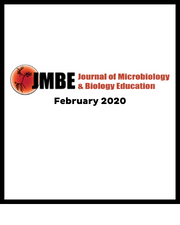Michele K. H. Malotky, Kayla M. Mayes, Kailyn M. Price, Gustavo Smith, Sherese N. Mann, Mesha W. Guinyard, Sarina Veale, Vung Ksor, Lek Siu, H’Lois Mlo, Andrew J. Young, Maura B. Nsonwu, Sharon D. Morrison, S. Sudha, Kelsie M. Bernot
Journal Of Microbiology & Biology Education
Fostering Inclusion Through An Interinstitutional, Community-Engaged, Course-Based Undergraduate Research Experience
Volume 21, Number 1
Creation of an inclusive environment requires a culture of equity, justice, value and respect for diverse backgrounds, and opportunities for students to engage with communities while addressing issues in science and society. These tasks are particularly challenging for institutions lacking a diverse population. Here, we demonstrate evidence of a successful model for creating an inclusive environment in an interinstitutional course between a large, public, historically black institution and a small, private, primarily white institution. Because many individuals from underrepresented minority groups tend to value communal goals of working together and helping their communities, we incorporated two high-impact practices of community-engaged learning and course-based undergraduate research experiences (CUREs) focused on health disparities research in neighboring communities. Although the research projects varied each semester, they were linked by their impact on and engagement with the community. Students practiced cultural competency skills in both small group projects within the class and engagement activities in the community. We measured the efficacy of CURE components (novel authentic research, scientific process skills, iteration, collaboration, and broader impact) through a combination of direct and indirect assessments, quantitative and qualitative analysis. More than simply scientific skills, students from both institutions developed lasting interest in working with diverse populations as well as respecting and valuing different backgrounds. This inclusive environment, combined with increased interest in research, suggests that this course could potentially serve as a model for interinstitutional collaborations in creating inclusive environments that support the future success of diverse students, eventually changing the STEM research culture.
